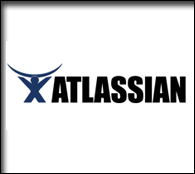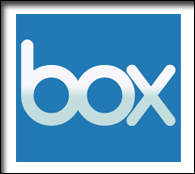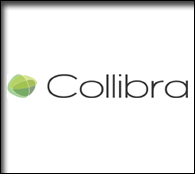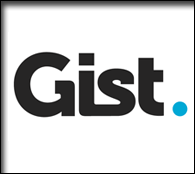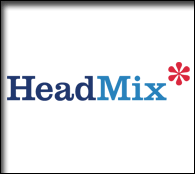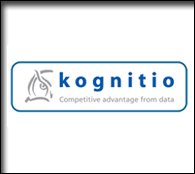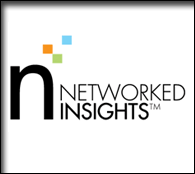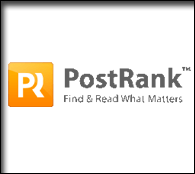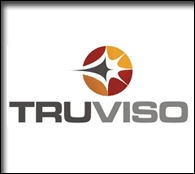Archive for November, 2008
Avoiding the innovator’s dilemma
by Eric Norlin on Nov.25, 2008, under conference topics, defrag "theory"
One of the weird parts of my “job” is to look beyond what attendees say they want to hear more about, and give them things that I think they *should* hear more about (i.e., to provide them with stuff they haven’t thought of yet). Call it the “innovator’s dilemma” for conference organizers. Too often, conference organizers give very little “analytical” thought to the space that their conference exists in, and too much weight to what attendees say they want. Granted, it’s a fine line (I’m not saying “don’t listen to your customers”), but it’s one that a good conference organizer should spend some time on.
That’s what my November-December is about re: Defrag. Take the time to absorb the immediate conference feedback, then think through the whole experience. Finally, once you’ve gained some separation, think about the biggest of big picture stuff and figure out what you need to bring to the table that people *aren’t* asking for. Getting caught giving them simply what they want can only result in a downward spiral for content. You must give them what they need that they don’t know about yet.
Of course, failures will occur. I’m not a world-class prognosticator. But I do get a pretty interesting overall view of things. One that even analysts can often miss, as they’re dragged in different directions by “customers” and vendors - and what I’m talking about (ideally) is off the map for both of those categories.
All of that said, two big pieces have really fallen into place for me in the last few weeks; two pieces that I know we need to get to Defrag 2009 in a substantive way: 1) data visualization; and 2) how a changing “interface” can impact the ways in which we interact with data. Let me briefly address each separately.Â
1) Data Visualization: we had some of this stuff at the first defrag, and I really enjoyed it. My sense is that all of us get so caught up in the “word-driven” applications that we forget the rich gold mine of insight that can be gained through good data visualization. I’m not well-versed in this space, but I’m gonna start digging. We need to start dragging visualizations into all of this semantic, enterprise 2.0, collaborative, social media stuff (and I don’t mean simply video).
2) Changing Interfaces: by this I mean stuff like Oblong and Microsoft surface.  It may seem that these new technologies aren’t all that related to defraggy stuff, but just like data visualization, I think that couldn’t be farther from true. HOW we interact with information and data simply will affect what we gain from it. Accordingly, I think we need to get the teams around these technologies talking with the enterprise 2.0, collaboration and semantic vendors of the world. Sure, textual stuff isn’t going away, but in ten years we won’t simply be using a keyboard and mouse either.Â
So, while I’m definitely listening hard to the feedback that’s calling for more content around collective intelligence, online collaboration, enterprise 2.0, social media and semantic applications, I know that we must bring areas like data visualization and the changing interface to bear on the larger topics of defrag as well. Stay tuned - it’s gonna get interesting-er. ;-)Â
Not predictions, or pontifications, but…
by Eric Norlin on Nov.15, 2008, under general, industry stuff
This morning I’m thinking about how weird and wonderful and topsy turvy the next 3-5 years are going to be. I’m thinking about “what if” scenarios. Not predictions. Not pontifications. Not even well-reasoned thought. Just “what if” scenarios…
What if…the Foundry Group, Jeff Clavier, YCombinator, Union Square, TechStars “method” of being a VC became the prominent one, and the big boys (Sequoia, Kleiner Perkins) found themselves with a broken model?
What if…a bunch of tech-saavy VC/entrepreneurial types actually set up a marketplace for the equity of private companies and re-ignited the ability to “exit” (at some level) for startups.?(Kedrosky - if you do this, I wanna work on it.)
What if…the automakers (per Fred Wilson’s suggestion) ended up busted up, not bailed out, and owned largely by private equity firms?
What if…the “enterprise 2.0″ space stumbles upon an innovation in productivity so HUGE that it’s akin to the productivity gains we first saw when email became corporate common-place?
What if…Google lost it’s dominance and Facebook became a failed experiment?
What if…TechCrunch turned out to be a “web 2.0 phenomenon” and shuttered it’s doors?
What if…we stopped seeing incremental gains in tech innovation and saw a true “gap jump?”
What if…oil rose with the recovery, but didn’t go above $80?
What if…Tesla went under, but the Volt was a huge success?
What if…Boulder, Pittsburgh, the Twin Cities, Austin, New York and the Research Triangle replaced Silicon Valley as “the epicenter” of innovation?
What if…Novell and Sun went private (can we please get this done? please?)?
What if…eBay went under, but not before spinning out PayPal in an acqusition to a regional bank?
What if…the only “bank” left standing at the end of this is Wells Fargo and a bunch of decent balance sheet regionals?
What if…hedge fund managers start getting paid on the same time frames as their investors?
What if…all of this “end of the American Empire” talk is silly, and the country emerges from this a nation of fiscally responsible, energized entrepreneurs (and rugged individualists)?
What if…all of this is part of a larger “networking of everything” phenomenon that’s occurring. And the result is a more distributed, intelligence at the edges — everything (national infrastructure, finance, state initiatives, etc)?
What if…Cisco buys Salesforce.com and the Amazon Web Services part of Amazon?
What if…the “new” James Bond movies continue to be as good as Casino Royale?
What if…the long-term demographic “shift” to the southwest and southeast continues and the majority of America resides there by the year 2025? (okay, that wasn’t 3-5 years.)
Yeah, it’ll probably never happen, right? But on the other hand….
Defragging Defrag
by Eric Norlin on Nov.14, 2008, under general
Another Defrag is done, and things turned out very well. I’ve already thanked attendees, sponsors and speakers privately, but let me say this again publicly — THANK YOU — we are quite obviously nothing without all of you. ![]()
That said, I spend around 2 months post-Defrag “pondering” what went right and what went wrong - and then I head into 30-60 days of talking with specific sponsors and speakers prior to picking up the rock and getting to the top of the hill again. One caveat: my brain is still pretty much oatmeal. I’m going to start some rambling “defragging defrag” thoughts, but no one should mistake this for “eric at the top of his game.”
What we did wrong (an ongoing list of suggestions, nit-picks, etc):
1. Power outlets at the tables by the windows: We had power strips in the general session room (as always), but those of you that were there know how popular the “tables by the windows” outside of the rooms were. I got a great suggestion to have power there as well.
2. Session descriptions: I always struggle with this one. Some people would love session descriptions, others like the “open-ended” nature of things. What I’d like to do is find a way for speakers to collaboratively write the descriptions.
3. Un-evenness of content on Day 2: I felt (and heard) that we had some un-evenness of content quality from day 1 to day 2. Noted - and will be fixed. Folks were blaming presenters, etc - but really, the “blame” always falls to me. Don’t get me wrong, some of our most popular speakers were on Day 2 - but I’m striving for perfection here not merely “good enough.”
4. Lack of Open Space: We didn’t have the 90 minute open space this year, and I think we felt the effects. As an organizer, I want to find ways to move people out of their conversational comfort zone (and into surprising situations). We’ll get that done next year.
5. Lots of miscellany: A table not in the right place, a late start on a session, the lack of “protein” at breakfast, a moment that wasn’t orchestrated correctly, a speaker that wasn’t properly prepared. I’ve got a whole bunch of stuff on this list.
6. Digging deeper: We need to find a way to maintain the “high level” talk, while digging deeper into specific topics. Case in point: “social networking” was everywhere this year at Defrag, but I felt like we never managed to get past the cursory discussions. I want to outline the big issues, and then dig into specific areas as needed. It’s a tough balancing act, but one that we’ll work on. I’ve taken to describing this as “tying down our big balloon of thoughts with 2 or 3 ropes” (i.e., not becoming “grounded” but still being tied to the ground).
7. Moving the best to the forefront: There were a some speakers that really needed to be in keynote slots that weren’t. Stowe Boyd, Brian Oberkirch and the boys from Get Satisfaction were cited in the surveys - and I agree.
What we did right:
1. Amazing people: For reasons I don’t completely understand, Defrag draws one amazing group of people. I am always shocked at the sheer energy that is generated in discussions.
2. Some spectacular speakers: As stated above, we had some great speakers. The ones that were called out in surveys included Daniela Barbosa, Stowe Boyd, Brian Oberkirch, Get Satisfaction, Charlene Li and Paul Kedrosky. Bill Duggan (our opener) came out on top as the absolute favorite speaker.
3. Atmosphere: I’m not sure if it shows through or not (I’m way too close to the thing), but Kim and I literally rip our hair out trying to make Defrag’s atmosphere conducive to interactions that blow your mind. We learn something every year, but I received so many great comments about this year that I’m feeling pretty good.
4. Sponsors: People genuinely *liked* interacting with our sponsors this year. Many, many folks cited “visiting the booths” as a highlight for them. Interestingly, those same people tended to comment that our sponsors need to focus on differentiation.
5. The Passport Program: this was just fun. Everyone getting their stamps and looking for prizes. Folks dug it. We’ll do it again next year.
6. BoF dinners: Again, an area we made work this year that didn’t work in year 1. Thanks Get Satisfaction - folks loved it! (My favorite BoF was the “bowling and drinking” BoF.)
7. The “pre-conference” email dinner: Our 25 person experiment really came off well (thanks to Chris Wand and Microsoft). Next year, we’ll be expanding this and finding ways to bring the initial group back together for more discussion later in the defrag experience.
8. Twitter: Okay, one person thought I was too flippant about “everyone using twitter” (hi jennifer!) - and maybe so, but the folks at defrag are certainly not mainstream. Eventvue’s “mega-aggregation” of the feeds was a real plus, and the 1500 tweets generated in 2 days was just cool. (sidenote: kudos to Eventvue for a real step forward in how to effectively implement social networking at conferences.)
9. Press and Analysts: We had some very nice press come out of the show, and I know that folks had time to catch up with analysts old and new as well.
10. New topics surfaced: Next-gen messaging/email, analytics and “crisis informatics” will be getting highlighted in big ways next year. One of the best moments for me was meeting a guy from the Department of Homeland Security that showed up without being registered and just wanted to “see who was there.” The resulting conversation was completely fascinating to me as he highlighted the research they’re doing around “crisis informatics” and how all of this “stuff” is affecting their thinking around crisis response and management. Look for a keynote around this next year.
Bottom Line: running a conference with essentially two people (my incredible wife Kim and myself) is one of the most exhausting, exhilarating, frustrating, wonderful things you can do. We really do bang our heads against the wall for the seven months prior to Defrag, and more than anything, I hope that shows through. I often joke that “all that is good” at Defrag is because of Kim, while “all that is bad” is most likely my fault, but that’s really not as much of a joke as it seems. ![]()
Thanks to all of you that attended Defrag. It feels to me like we’re building one helluva community, and I can’t wait to hang out, clear our heads, and drive innovation forward again next year.
